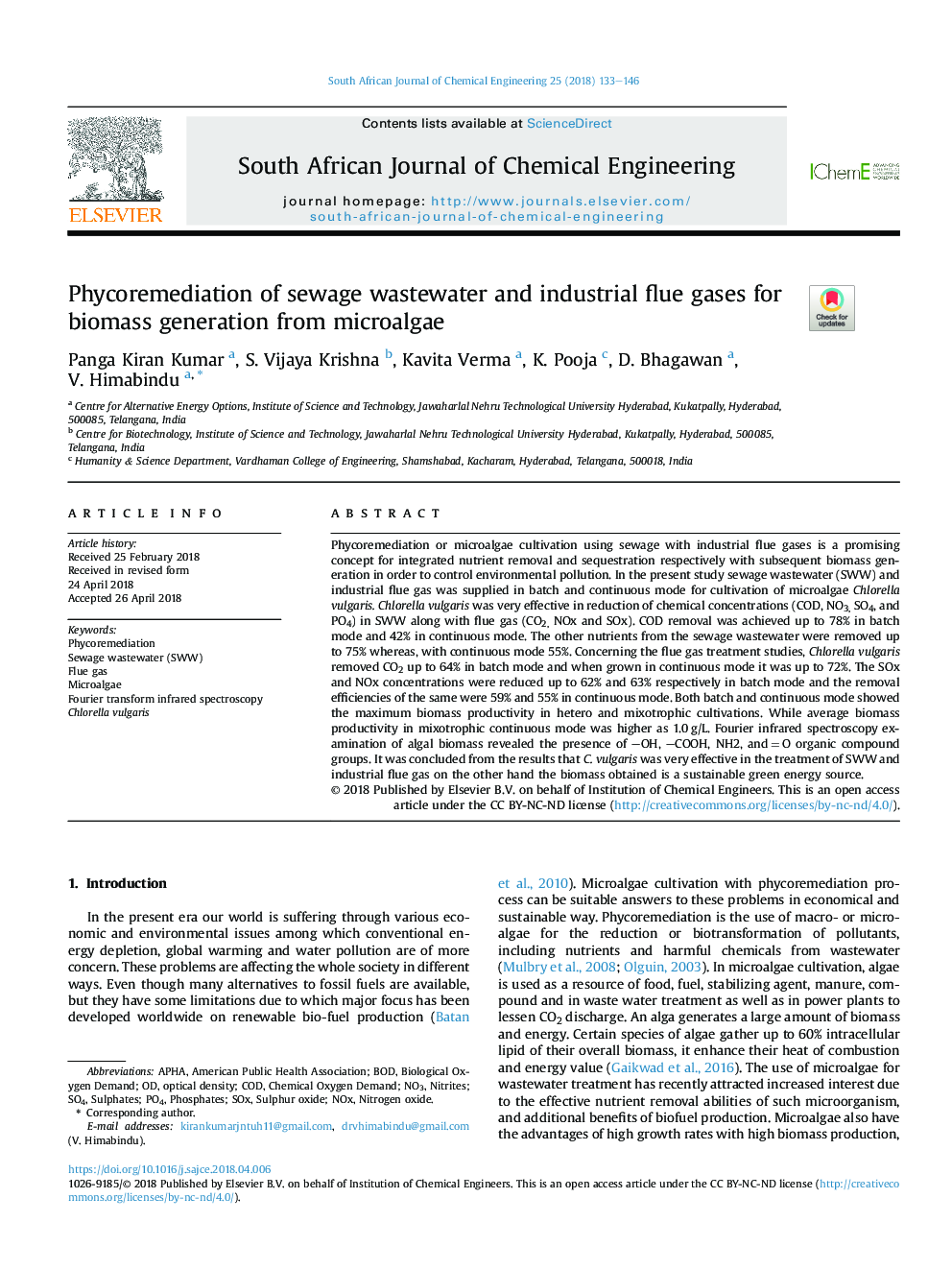| کد مقاله | کد نشریه | سال انتشار | مقاله انگلیسی | نسخه تمام متن |
|---|---|---|---|---|
| 8917063 | 1642738 | 2018 | 14 صفحه PDF | دانلود رایگان |
عنوان انگلیسی مقاله ISI
Phycoremediation of sewage wastewater and industrial flue gases for biomass generation from microalgae
ترجمه فارسی عنوان
تصفیه فاضلاب فاضلاب و گازهای دودکش صنعتی برای تولید زیست توده از میکروالاها
دانلود مقاله + سفارش ترجمه
دانلود مقاله ISI انگلیسی
رایگان برای ایرانیان
کلمات کلیدی
PhycoremediationAphABODNOx - NOXPO4 - PO 4SOx - SOXAmerican Public Health Association - انجمن بهداشت عمومی آمریکاnitrogen oxide - اکسید نیتروژنBiological Oxygen Demand - تقاضای اکسیژن بیولوژیکیchemical oxygen demand - تقاضای اکسیژن شیمیاییMicroalgae - ریز جلبک هاSulphates - سولفاتFourier transform infrared spectroscopy - طیف سنجی مادون قرمز تبدیل فوریه یا طیف سنجی FTIRPhosphates - فسفاتNitrites - نیتریتoptical density - چگالی نوریCod - کادوChlorella vulgaris - کلرلا ولگاریسFlue gas - گاز دودکش
موضوعات مرتبط
مهندسی و علوم پایه
مهندسی شیمی
مهندسی شیمی (عمومی)
چکیده انگلیسی
Phycoremediation or microalgae cultivation using sewage with industrial flue gases is a promising concept for integrated nutrient removal and sequestration respectively with subsequent biomass generation in order to control environmental pollution. In the present study sewage wastewater (SWW) and industrial flue gas was supplied in batch and continuous mode for cultivation of microalgae Chlorella vulgaris. Chlorella vulgaris was very effective in reduction of chemical concentrations (COD, NO3¯, SO4¯, and PO4¯) in SWW along with flue gas (CO2, NOx and SOx). COD removal was achieved up to 78% in batch mode and 42% in continuous mode. The other nutrients from the sewage wastewater were removed up to 75% whereas, with continuous mode 55%. Concerning the flue gas treatment studies, Chlorella vulgaris removed CO2 up to 64% in batch mode and when grown in continuous mode it was up to 72%. The SOx and NOx concentrations were reduced up to 62% and 63% respectively in batch mode and the removal efficiencies of the same were 59% and 55% in continuous mode. Both batch and continuous mode showed the maximum biomass productivity in hetero and mixotrophic cultivations. While average biomass productivity in mixotrophic continuous mode was higher as 1.0â¯g/L. Fourier infrared spectroscopy examination of algal biomass revealed the presence of -OH, -COOH, NH2, andâ¯=â¯O organic compound groups. It was concluded from the results that C. vulgaris was very effective in the treatment of SWW and industrial flue gas on the other hand the biomass obtained is a sustainable green energy source.
ناشر
Database: Elsevier - ScienceDirect (ساینس دایرکت)
Journal: South African Journal of Chemical Engineering - Volume 25, June 2018, Pages 133-146
Journal: South African Journal of Chemical Engineering - Volume 25, June 2018, Pages 133-146
نویسندگان
Panga Kiran Kumar, S. Vijaya Krishna, Kavita Verma, K. Pooja, D. Bhagawan, V. Himabindu,
